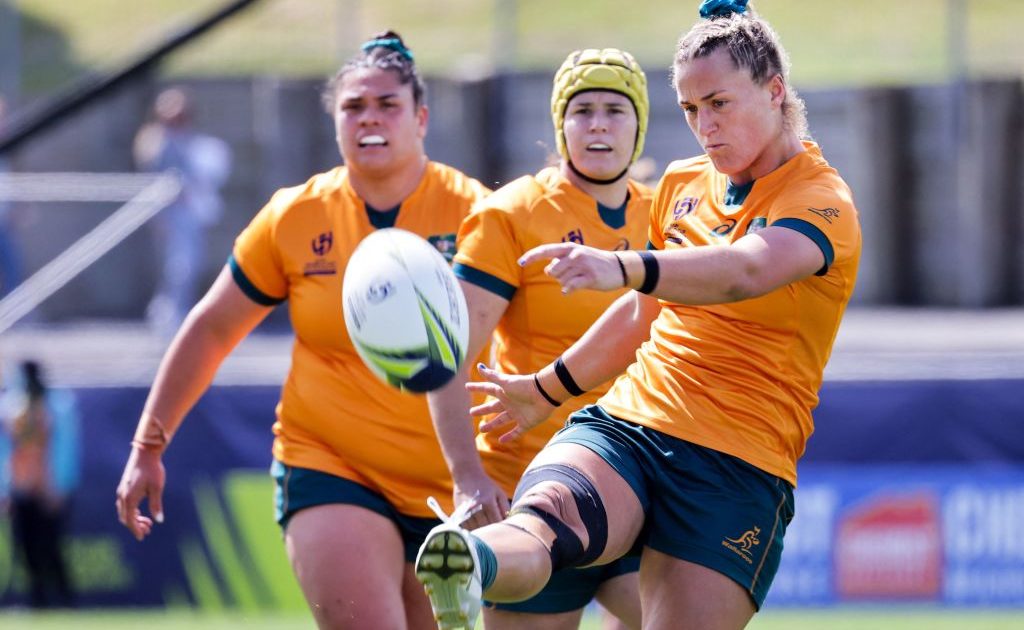Analysis: Top performers from Round 2 of the World Cup

Round two. It’s often the best bit of a Rugby World Cup. By the end of round one, you’ve had your chance to learn new players, styles of play and trends in teams’ performance. As round two emerges, you get to confirm your assumptions about these players, and for the first time ever you can actively get excited to see them play again.
In this year’s competition, we were treated to a few unsurprising results delivered in surprising fashions. With England underperforming to scrape victory against a magnificent French team, Canada beating Italy without getting out of second gear, and Scotland’s Rachel Malcolm using the word “heartbreak” in her post-match interview for the second week running, this was a weekend to remember.
With that in mind, let’s have a look at some of the game changers in the second round of the competition, and the impact they each had.
Scotland vs Australia – Arabella McKenzie
This was an interesting one. With Scotland dominating early on, you can’t possibly say one Wallaroos player was consistently excellent for the full 80 minutes. McKenzie’s performance against Scotland won’t go down as one of the best outings of her young career, but without her, it’s much easier to see Australia losing that game.
McKenzie’s game was not free of errors, but the fact a 23-year-old test ten can put that behind her and inspire two late tries, kick both conversions and win her team the game is testament to her. No rugby fan would disagree that the freshly-nicknamed “Bella the Boss” is one of the most talented players in the tournament, but the temperament she showed on Saturday shows what a fantastic player we have before our eyes.
Let’s dissect her management of one of those momentum-swinging moments: the build up to Biene Terita’s opening try for Australia, 56 minutes in.
After a scrum, Australia scrum-half Iliseva Batibasaga hits McKenzie on the left, first phase.
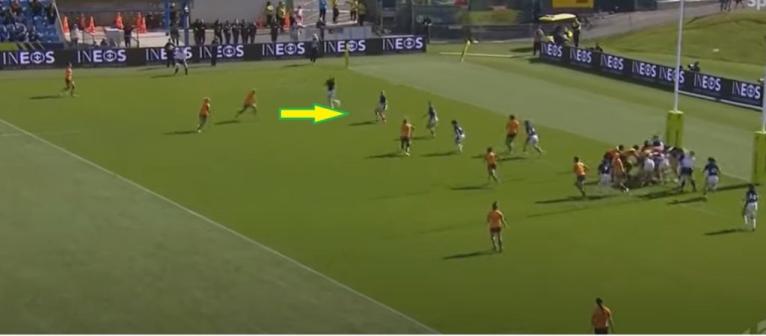
Australia have set up a simple hit/boot play outside McKenzie, with Sharni Williams running the hard line (as the yellow arrow indicates). McKenzie notices Scotland’s Emma Orr has her shoulders turned outwards, noting the threat of Georgie Fredrichs in behind. McKenzie hits Williams on the short ball, meaning Scotland have to commit two women to the tackle.
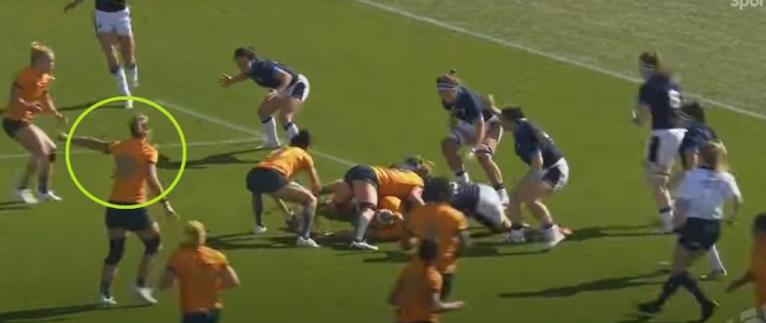
Australia get quick ball, and McKenzie points for Batibasaga to give the ball to Fredrichs, which she does. This way, Australia play to an edge and McKenzie can weigh up her options on the next phase, with the full width of the pitch to work with.
Australia then go into pick and gos, meaning the fly-half doesn’t touch the ball for five phases. When she eventually does, she runs herself once, then gives Sharni Williams another run on the right-hand side. With Scotland’s backs tied into Williams, Australia play infield.

Batibasaga feeds prop Liz Patu, and McKenzie chooses not to call for the ball in the boot, instead telling Patu to carry. Australia have an overlap, but she doesn’t want Lisa Thomson to fly up and shut it off. Forming a ruck, however, forces Thomson to go get back onside and takes the pressure off.

McKenzie calls for the ball and has a 4v2 outside her with ample space to execute it. Hannah Smith on the wing marks Fredrichs, knowing McKenzie isn’t afraid to hit the short ball.
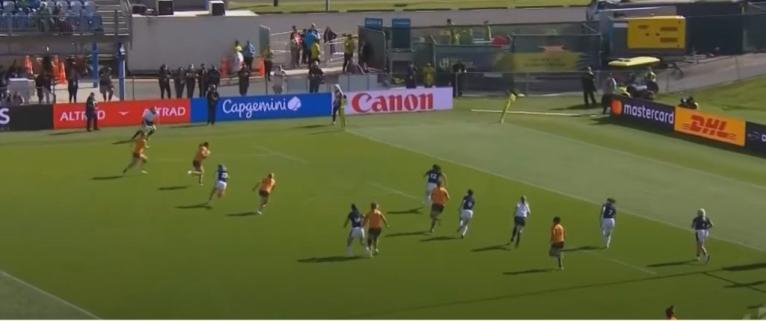
Instead, she throws it over the top to Terita who is in open space and finishes the try. It’s a masterclass in varying your options to manipulate a defence in the opposition 22 from Australia, and a terrific ball by McKenzie to bring Australia back into the game.
USA vs Japan – Alev Kelter
After a first outing at fullback, Kelter looked much more at home in the 12 jersey. The USA had a difficult opening encounter against Italy, but looked much more on-song against Japan.
It’s no surprise that the Saracens hero stood up once again on the big stage, but Japan were always going to find it difficult to live with such a dominant display of goal-kicking. It isn’t much to analyse, but if you want an example of Kelter’s excellence with the ball just revisit her fantastic break in the build-up to Bitsy Cairns’ 60th minute try.
Her touch in the lead-up to Jojo Kitlinski’s try is nice too:
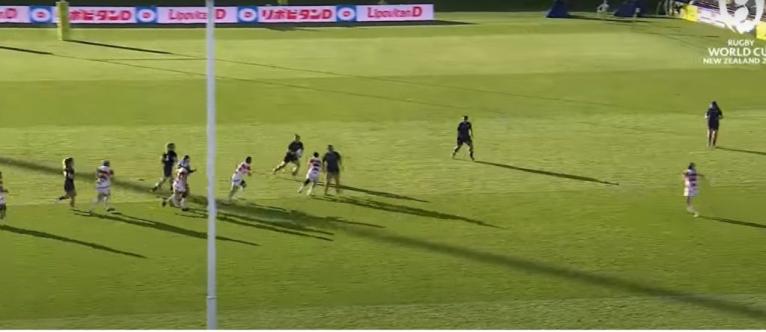
Kelter takes the ball in the boot, while running sideways, hoping to engage the furthest out defender.
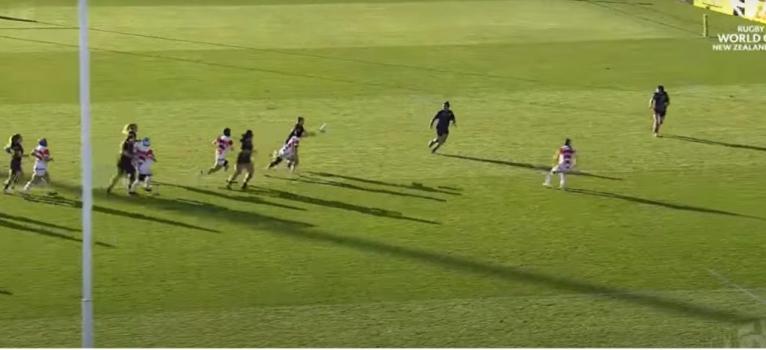
Ayasa Otsuka does a great job to bat off a blocking runner and fly up on Kelter, so the centre immediately passes the ball so she doesn’t take up any more of Eti Haungatau’s space. Because Otsuka has rushed up, she now has to rush back to get near Hangatau, who times her pass perfectly for the try to be scored.
England vs France: Alex Matthews
Truthfully, the best player on the pitch in “La Crunch” was France’s Gabrielle Vernier, but England owe a lot to their blindside flanker for how they stuck in the game. Matthews is quietly one of the first names on the teamsheet for Simon Middleton, and on Saturday she showed why the entire squad ought to be grateful for her.
England typically alternate who their edge forwards are – in the first half of this game alone, you will see Sarah Bern, Amy Cockayne, Marlie Packer and Alex Matthews all stood on the wing. Let’s have a look at how she’s the perfect asset to England’s 1-3-3-1 system, equally adept at playing both roles.
First, let’s see her impact in midfield:
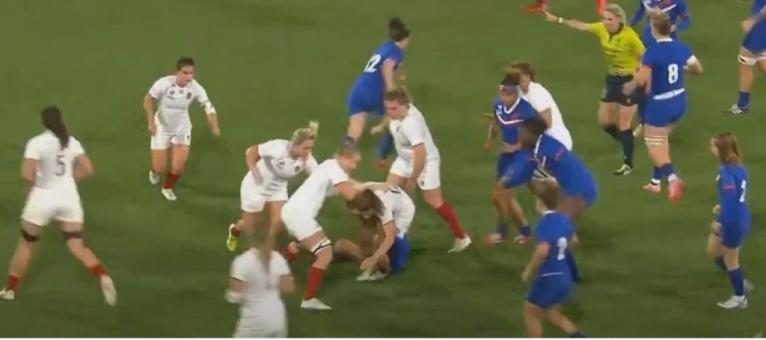
As Sarah Hunter is tackled, Matthews spots one of France’s main jackal threats in Madoussou Fall. As such, she wastes no time in latching onto her captain as she descends.
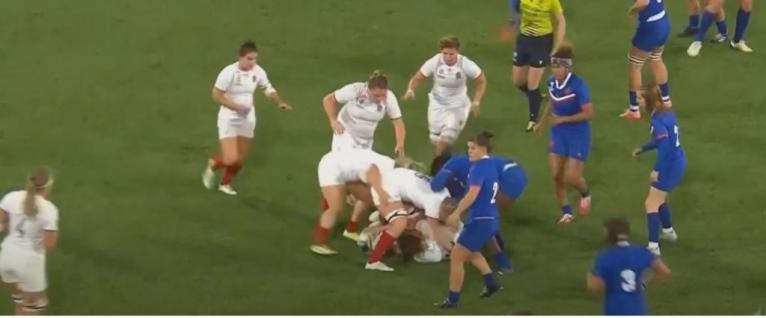
Many players would be coached to actively clear Fall out and leave the next player to lock the ruck down, but with Agatha Sochat also lurking, Matthews takes no chances. She bends her knees and uses the extra half-second to her advantage, getting lower than Fall. She essentially legally seals the ruck off, meaning England aren’t at risk of a turnover while on the back foot.
A few minutes later, here she is as an edge forward. As Helena Rowland takes the ball in the boot of Zoe Harrison, Matthews arcs her run outwards along with Rowland’s sideways running.

As Vernier drifts to cover her, she straightens her run at the last second.

Because of her change of angle, she gets a weak arm-tackle from Vernier and a soak-up shot from Gaelle Hermet. Consequently, she makes an extra 10 metres from this carry and cruises into the French 22.
Canada vs Italy – Sophie De Goede
In a generally solid Canada team, skipper De Goede is typically the shining light. Her skillset and game understanding is generally unmatched by other number 8s in the tournament.
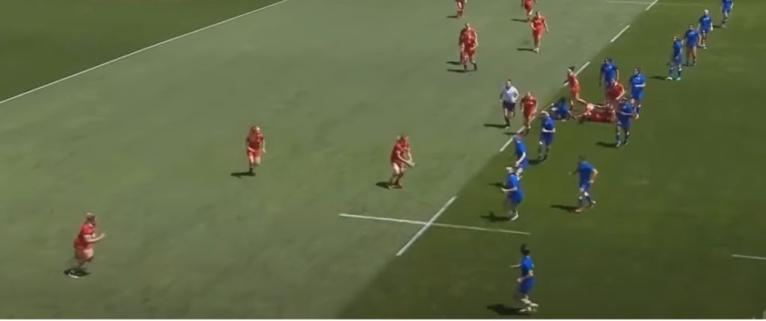
Here, she takes the ball as first receiver. With Alex Tessier running in her boot, Italy run a soft drift defence so they can push Canada to the touchline. There’s one thing they’ve forgotten about giving De Goede time on the ball, though…

…Her massive boot. Italy’s backfield is poorly managed, and Canada are unlucky not to get a 50:22 here. If teams aren’t permanently on the money at the back, they can expect Canada to pump a few balls behind them.
New Zealand vs Wales – Ruahei Demant
Black Ferns captain Demant had an unconventionally brilliant game on Sunday. It’s rare to see a fly-half carry so much ball, but given the holes Wales left for her, she was able to offload or make ground virtually every time.
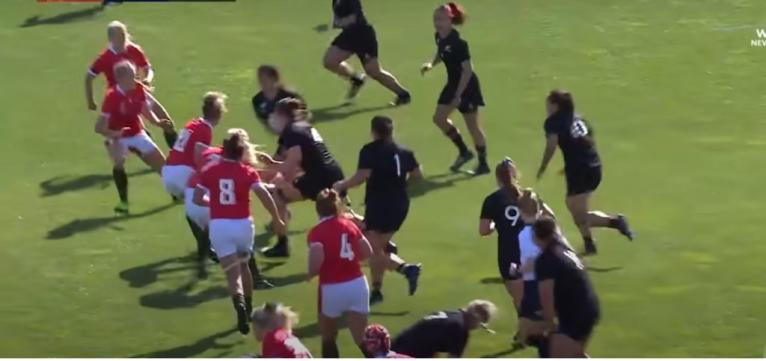
As Theresa Fitzpatrick carries the ball, Demant exits her position in the boot to anticipate a half-break. Fitzpatrick executes a perfect offload to find Demant in open country.
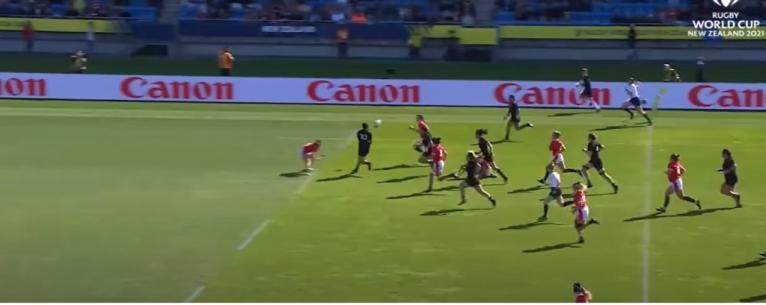
Demand makes a clean break, and passes to Renee Wickliffe just before Wales fullback Kayleigh Powell commits to the tackle, meaning she can’t put Demant on the floor.
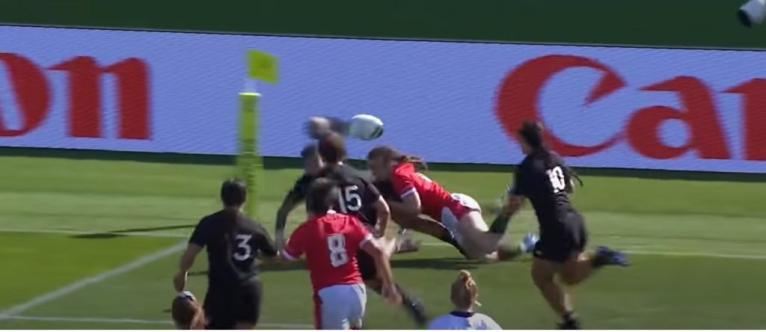
Demant curves her angle inwards and takes the return ball from Wickliffe. She sends the ball back inside to Ruby Tui, who sets up the try for Sylvia Brunt.
South Africa vs Fiji – Aseza Hele
In arguably the best game of the tournament so far, the standout player was in fact on the losing team. South Africa number 8 Aseza Hele already stood out in their opening game against France, but she was a different animal against Fiji. Two games into the competition, she is rivalling Jade Konkel-Roberts as the best carrying eight on show.
Her performance with the ball was so dominant that it’s easy to forget she scored South Africa’s second try on Sunday, so let’s have a look at that.
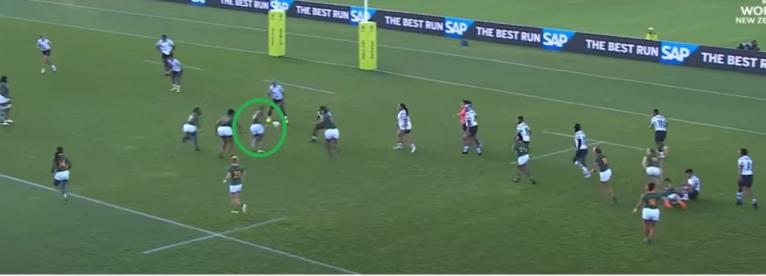
Hele, circled in green, runs a tip-on line. Instead of hitting the gap outside Asinate Serevi, she runs an overs line to get on the outside of Merevesi Ofakimalino, a much lighter tackler with a bigger hole outside her.
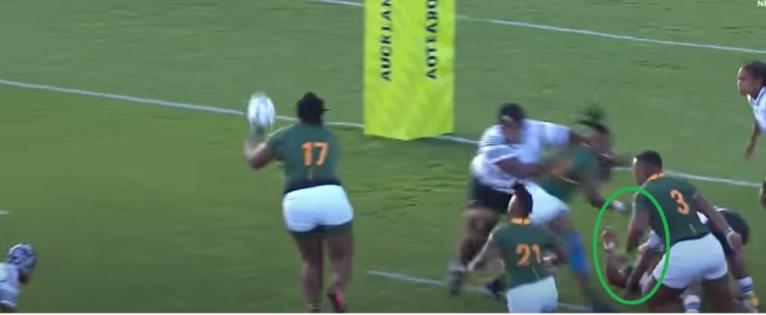
Hele makes 5 metres before she is tackled and she offloads. In the above picture, she is once again circled in green.
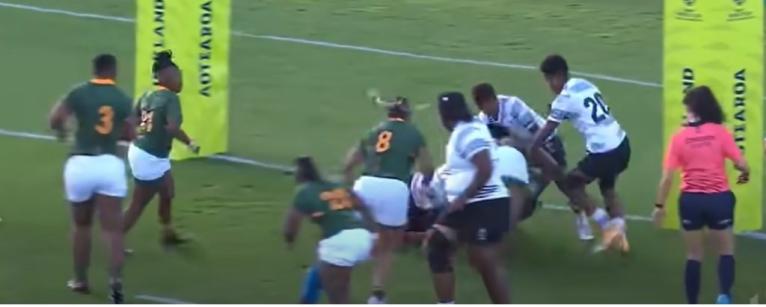
She pops straight back to her feet to hit the breakdown.

As she joins the ruck, Ema Adivitaloga (circled in white) slightly over-folds, leaving a small gap by the post. She notices at the very last second.
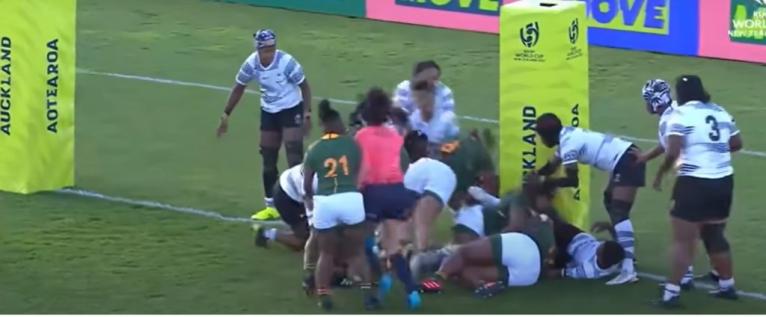
Hele reacts sharper than Adivitaloga and dives for the line to finish the try.
One of the great things about a Rugby World Cup is learning new players. What’s even better is when professional coaches have the same sensation and sign them on big deals, and they go from strength to strength in the big leagues.
Aseza Hele is the epitome of that kind of player in this competition. If Premier 15s coaches aren’t phoning up their clubs’ owners asking them to get out their cheque books for a South African unit at number 8, then more fool them.
































































